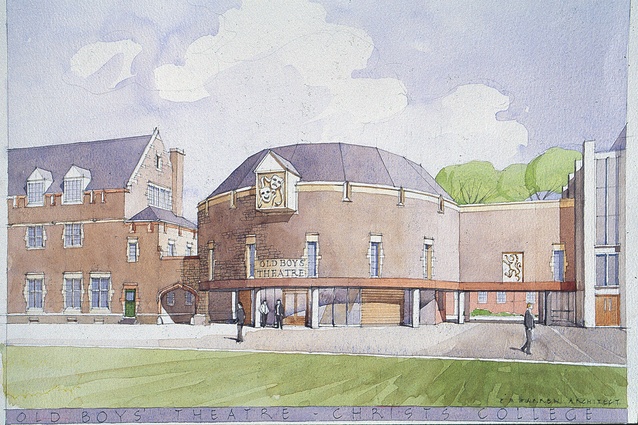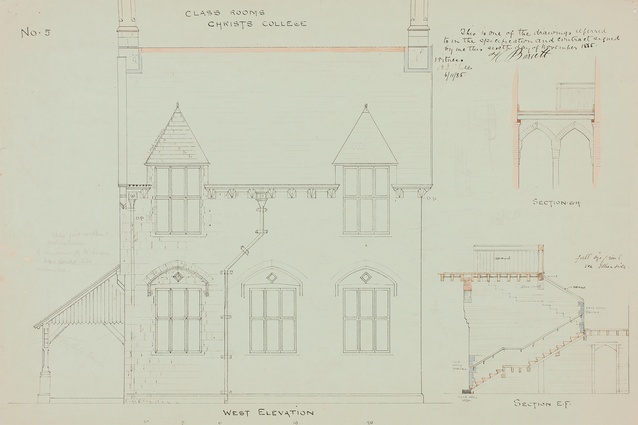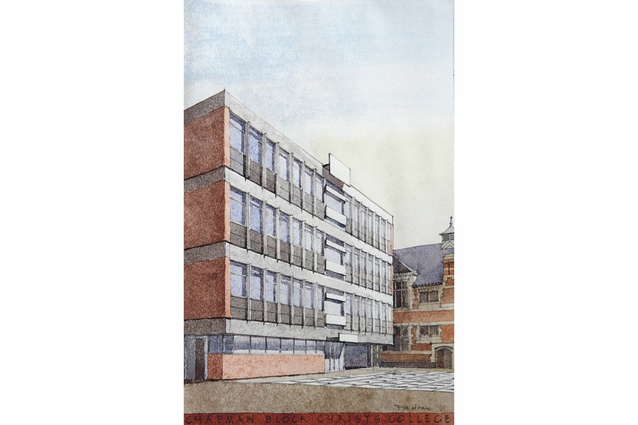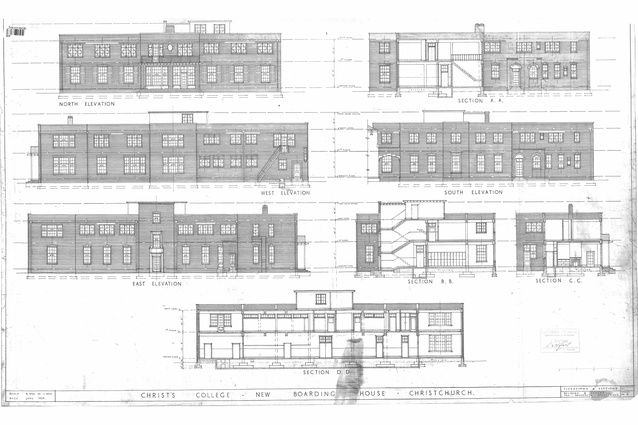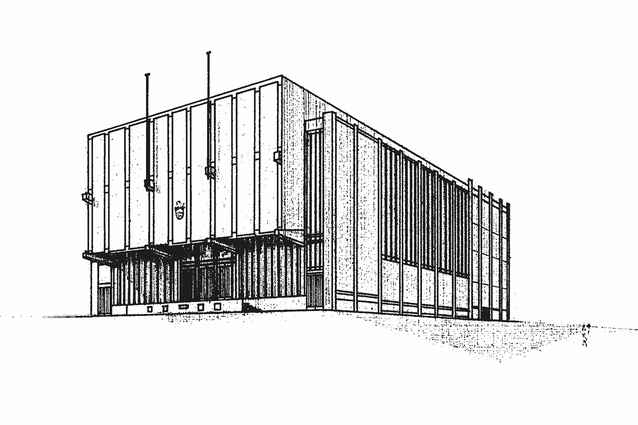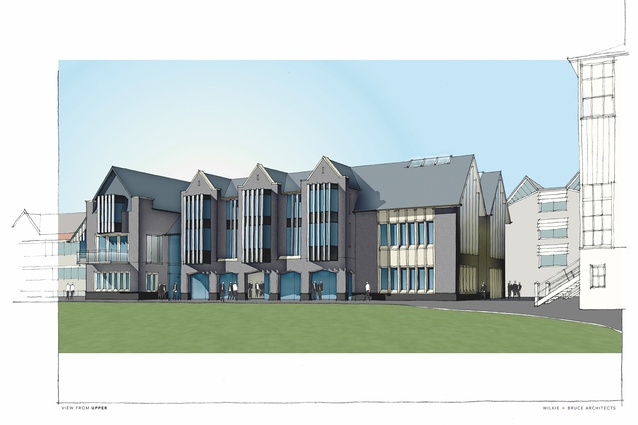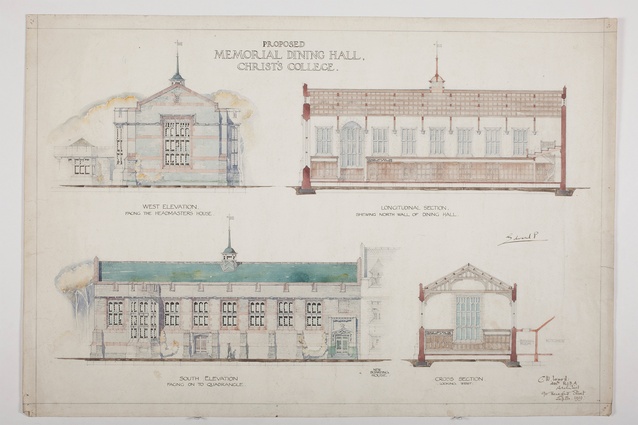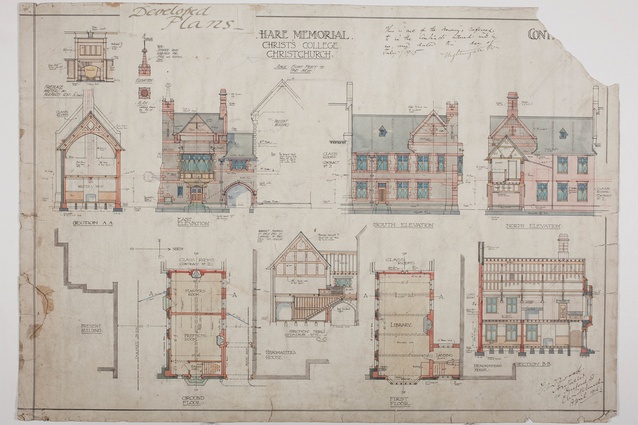Architectural Drawings of Christ’s College
Pip Cheshire finds Sir Miles Warren and Alec Bruce's collection of architectural drawings, accompanied by “erudite commentary and fine observations”, also tells a story of the evolution of drawing.
What a nice idea a college architect is, suggesting as it does the continuous oversight and nurturing of the school’s campus. Architectural Drawings of Christ’s College, by two of the college’s most recent holders of that position, Sir Miles Warren and Alec Bruce, reveals just such a sense of continuous nurturing. It is a beautifully produced collection of architectural drawings by some of Canterbury’s finest architects, including the authors themselves.
The volume’s 100 or so pages contain drawings from the earliest buildings constructed on the school’s Christchurch site to its most recent building. Each is accompanied by a text offering a history of the building, a brief description of its notable features and, occasionally, some informal insight to the authors’ experience of the building. Thus, we are introduced to Benjamin Mountfort’s Julius House, with its high window sills, generous cloister and steeply pitched roof. We learn too, of the lockers within being used to lock in the new boy, Warren, while sticks were poked through the mesh door. These personal asides are curiously at odds with the formality of the buildings illustrated yet give the text a human, albeit occasionally cruel, cast and prevent it from becoming an austere compendium of school buildings.

The college was founded in 1851 within a settler community determined to create a facsimile of British middle-class society and, while this seems a quaint notion in decolonising Aotearoa, the school has amassed a group of buildings described by some as the best collection of heritage buildings in the country. Almost all of the college’s existent buildings, and some of the lost ones, are illustrated with presentation and sample construction drawings. Within the course of the book’s narrative, we see the evolution of a reasonably coherent style of building and of the drawings used to communicate the projects to client and contractor.
Sir Miles has said that the school has had “a backward view” in its aesthetic. Whenever designed, the buildings have eschewed the contemporary in favour of a reworking of Gothic, Arts and Crafts, and Georgian influences. Where the new made an appearance, as in Warren’s 1960 Chapman Block, it was met with dislike and ultimately ‘edited’ out of the campus. Though surviving the earthquakes of 2011, it was found to be incapable of subdivision to suit changed pedagogy and was demolished to make way for the ironically named Miles Warren Building, a much more comfortably contextual piece by Alec Bruce’s office. It may be that it defied reconfiguration, but one suspects its flat roof and lack of detail was a bridge too far and later architects being briefed, including Sir Miles himself, were urged to look elsewhere for inspiration.
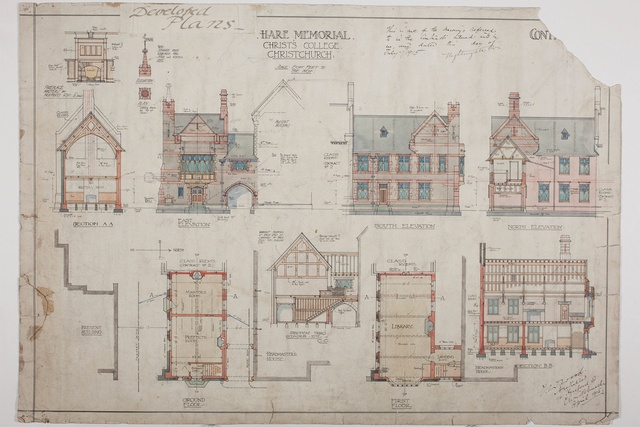
Where there has been no good reason to demolish, the desire for historical reference and detail has been met by the placement of later buildings. Warren’s 2000 Old Boys’ Theatre, for example, inserted into the beloved Main Quad’s curtilage, successfully obscures the modest brick form of Heathcote Helmore’s Richards House. This may seem little more than the mawkish re-creation of a private enclave in the English public school tradition, yet, such is the strength of the early buildings of Benjamin Mountfort and Cecil Wood in particular that one, maybe reluctantly, has some sympathy for the imperative to build with a ‘backward view’.
If the buildings tell a tale of the distillation of a common aesthetic, the drawings tell a story of the evolution of drawing from those illustrating the architecture to client and craftsman to the abstract assemblage of databases that is our lot today. The earliest drawings of Cecil Wood’s office, the most beguiling, beautiful soft watercolour renderings of building and detail of the Dining Hall and Hare Memorial Library, are rightly given pride of place and contrast sharply with the workaday images of, for example, Orchard and Allison’s 1965 Assembly Hall.
Throughout the text, there is erudite commentary, especially in Sir Miles’ description of the work of Cecil Wood, his first employer. His description of the reconciliation of Wood’s own dining hall with Mountfort’s adjoining Julius House is a fine piece of observation and introduces the importance of adjacency and the role of individual buildings within the greater whole. Though not specifically addressed in the book, the college is arrayed around a wonderful sequence of outdoor spaces of increasing remove from the world beyond the entry gates. The quadrangles and courtyards are linked by passages and laneways offering axial views to favoured buildings within the school, the river and park to the north, or the enclosure of the sports field to the west. As is invariably the case, the quality of the buildings is critical and well described but it is the spaces between them that so determine the character of the place.

